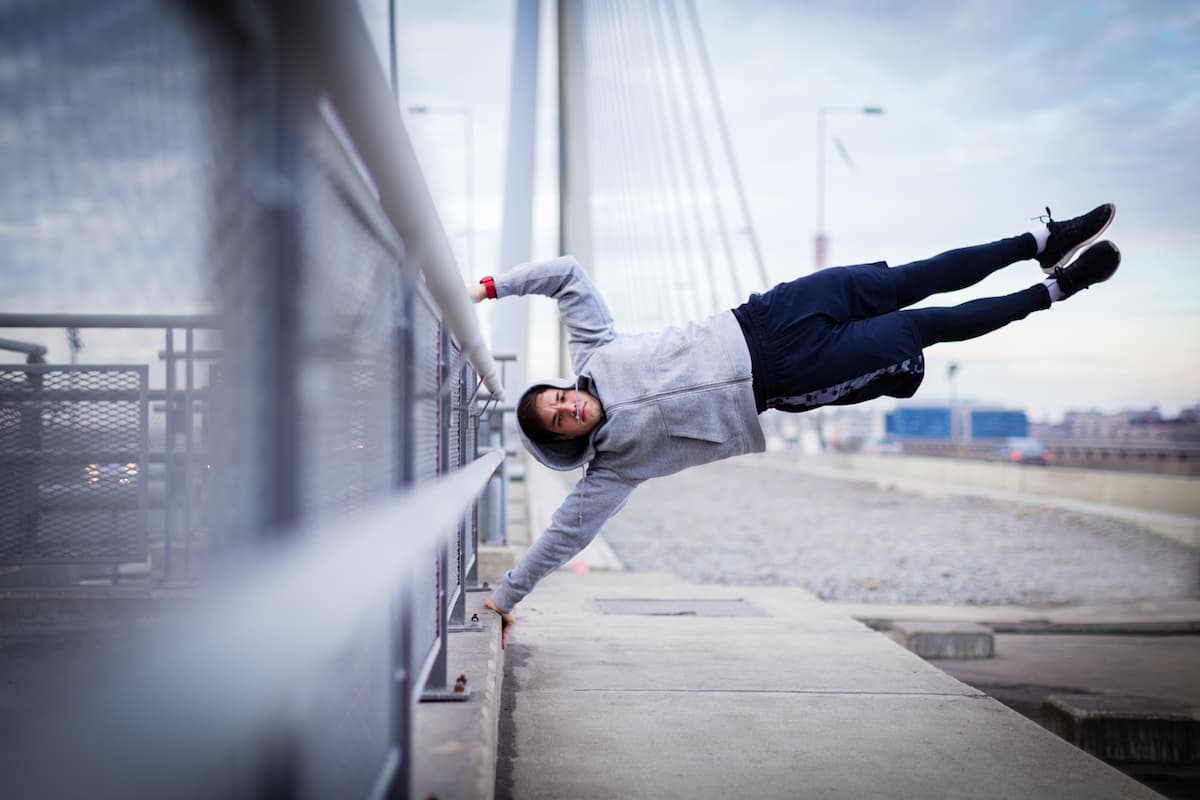The world of calisthenics is filled with awe-inspiring, gravity-defying moves that leave spectators wondering, “How did they do that?”
For many practitioners, one of these seemingly impossible feats stands out as a major accomplishment worth striving for: the human flag.
This guide will delve into the step-by-step process of achieving this remarkable feat by focusing on its core components, building up your strength through flag-oriented workouts, and breaking down the basics to get you flying high in no time.
The Human Flag: An Iconic Calisthenics Move
Calisthenics is a form of exercise that leverages one’s body weight and movement patterns to develop strength, flexibility, and endurance.
Among its various exercises, the human flag has become a renowned symbol within the calisthenics community and beyond.
Holding oneself parallel to the ground while gripping onto a vertical pole or bar might seem like a Herculean task but, with consistent effort and targeted training, it can be accomplished by individuals across different fitness levels.
Why Strive for the Human Flag?
Setting goals is essential when embarking on any fitness journey. In the context of calisthenics, aspiring towards the human flag can serve several purposes:
- Strength development: The flag challenges numerous muscle groups simultaneously, leading to overall strength gains, particularly in the upper body and core.
- Body control and balance: Performing the human flag necessitates a keen sense of body awareness and coordination, fostering advanced skills in both aspects.
- Aesthetic appeal: There’s no denying the visual impact of a well-executed human flag — it can function as a testament to one’s athleticism and discipline.
Building the Foundation: Flag-Specific Workout Strategies
The path to achieving a solid human flag starts with identifying and strengthening your key muscle groups. This section will provide an overview of these muscles, along with exercises that target them effectively.
Main Muscle Groups Engaged in the Human Flag
While there are numerous smaller muscles involved, several major muscle groups are required for a successful performance:
- Lats (Latissimus dorsi): These wide, wing-like muscles span the sides and back of your upper body and play a crucial role in stabilizing your position during the flag.
- Terminology: Also known as your “pulling arm,” this is the upper arm responsible for keeping you anchored to the vertical bar or pole.
- Pull-ups: With a focus on form and full range of motion, pull-ups are excellent for strengthening your pulling arm. Modify as needed using resistance bands at first, eventually progressing towards weighted pull-ups.
- Hanging leg raises: These emphasize core engagement while also challenging grip strength. Begin with bent-knee variations before advancing to straight-legged raises and windshield wipers.
- Inverted rows: Often called “horizontal pull-ups,” inverted rows help develop scapular engagement and control – essential elements of the human flag.
- Isometric holds: Performing static hangs in both active and passive states promotes grip endurance and trains your neuromuscular system for prolonged tension.
Additional Considerations: Flexibility and Injury Prevention
Beyond strength-building exercises, maintaining flexibility in your shoulders and spine can greatly benefit your flag practice.
Prioritize mobility work such as shoulder dislocates, downward-facing dog stretches, and spinal twists to ensure these areas remain supple under load. Moreover, including antagonist training (i.e., exercises targeting the muscles opposite of those engaged in the flag) provides a crucial balance that minimizes injury risk and encourages even muscular development.
From Basics to Balance: Expanding Your Flag Calisthenics Repertoire
Now that you’ve laid the groundwork for performing the human flag, it’s time to introduce more complex progressions and variations into your routine.
The following exercises build upon the fundamentals while inching you closer to full execution:
Tuck Flags: Progressing to Parallel
Starting with your legs tucked towards your chest or bent at approximately 90 degrees allows for a reduced lever length and body weight load to manage.
From here, concentrate on perfecting alignment and gradually extending your legs over time.
- Negative tuck flags: Begin by lowering yourself from a standing position into the tuck flag hold, focusing on establishing control over the descent.
- Tuck flag holds: Aim to maintain your tuck flag position for progressively longer durations. This enhances your neuromuscular activation and endurance capacities.
- Straddle flag: When confident in your tuck flag ability, start experimenting with opening your legs wider — a straddle stance reduces muscle loading compared to a fully extended leg configuration.
Last Stop: Full Flag Mastery
Once proficient in the prior stages, you’re now ready to tackle the full human flag. Emphasize controlled movement, proper alignment, and gradual progression over time.
Patience and consistency are your keys to success here.
- Assisted full flag: Employ a resistance band or training partner to provide external support while you adjust to the demands of this advanced calisthenics move.
- Kicking up: As an alternative approach, try kicking into the full flag position using momentum from your legs. However, use caution with this method since it can put additional stress on your joints if done improperly.
- Honor your limits: Always acknowledge limitations and know when to scale back intensity or seek guidance from qualified professionals.
In conclusion, flag calisthenics is both an admirable and attainable goal that offers numerous physical and mental benefits.
By prioritizing targeted workouts, progressively increasing exercise difficulty, and remaining patient during your journey, you can join the ranks of those who’ve made this spectacular feat a reality.

